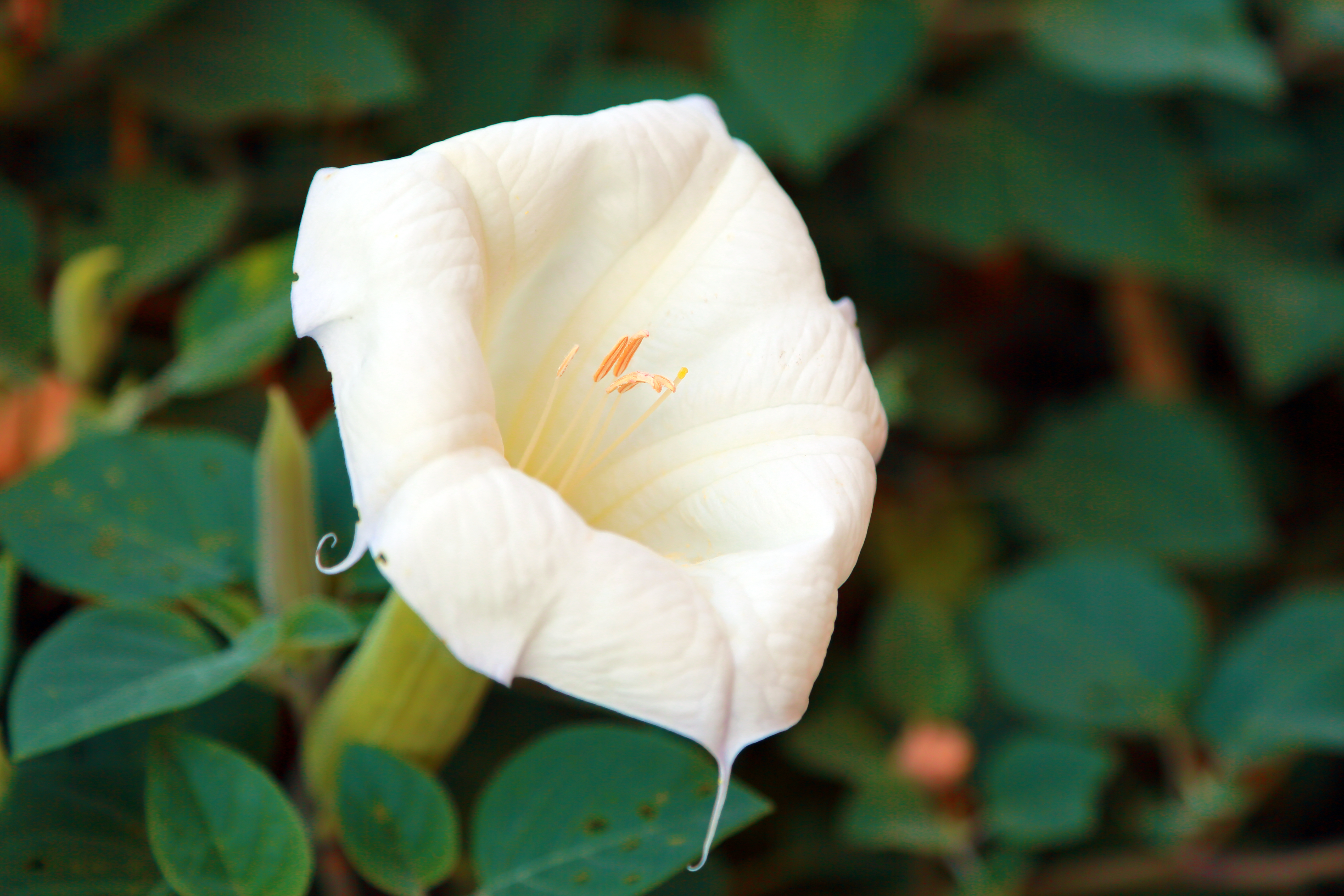Sacred datura
(Datura wrightii)

Description
Datura wrightii, commonly known as sacred datura, is a poisonous perennial plant species and ornamental flower of the family Solanaceae native to the Southwestern United States and northwestern Mexico. It is sometimes used as a hallucinogen due to its psychoactive alkaloids. D. wrightii is classified as an anticholinergic deliriant. It is a vigorous herbaceous perennial that grows 30 cm to 1.5 m tall and wide. The leaves are broad and rounded at the base, tapering to a point, often with wavy margins. The flowers are the most striking feature, being sweetly fragrant white trumpets up to 20 cm (7.9 in) long, sometimes tinted purple, especially at the margin. Five narrow points are spaced symmetrically around the rim. The plants often can be seen as a ground vine in habit, growing close to the ground and spreading in a very exposed environment with full direct sunlight (cleared roadside). D. Wrightii, blooms from April through October. In clear weather, flowers open in the morning and evening and close during the heat of the day (depending on water availability); in cloudy weather, they may open earlier and last longer. The seeds are borne in a spiny, globular capsule 3 to 4 cm in diameter, which opens when fully ripe. Datura wrightii is found in northern Mexico and the adjoining southwestern U. S. states, as far north as southern Utah, in open / disturbed land and along roadsides with well-drained (sandy) soils. However it is perhaps most naturally abundant in the region of Southern California. It is also commonly planted as an ornamental, especially in xeriscapes due to its ruderal characteristics. German botanist Eduard August von Regel described the species in 1859 from material collected in Texas by botanist Charles Wright, and named it after him. The correct spelling since is with one "i", per ICN article 60C.2. The scientific name has frequently been given as Datura meteloides Dunal, but this name is actually a synonym of D. innoxia Mill., a Mexican plant with a narrower flower having 10 rather than five "teeth" at the rim. Common names in the US include "sacred thorn-apple" or "hairy thornapple", and sometimes "western Jimson weed" because of its resemblance to Datura stramonium due to both species having toothed leaves. Anglophone settlers in California often called it "Indian whiskey" because of its ritual intoxicating use by many tribes; the name "sacred datura" has the same origin.
Taxonomic tree:







